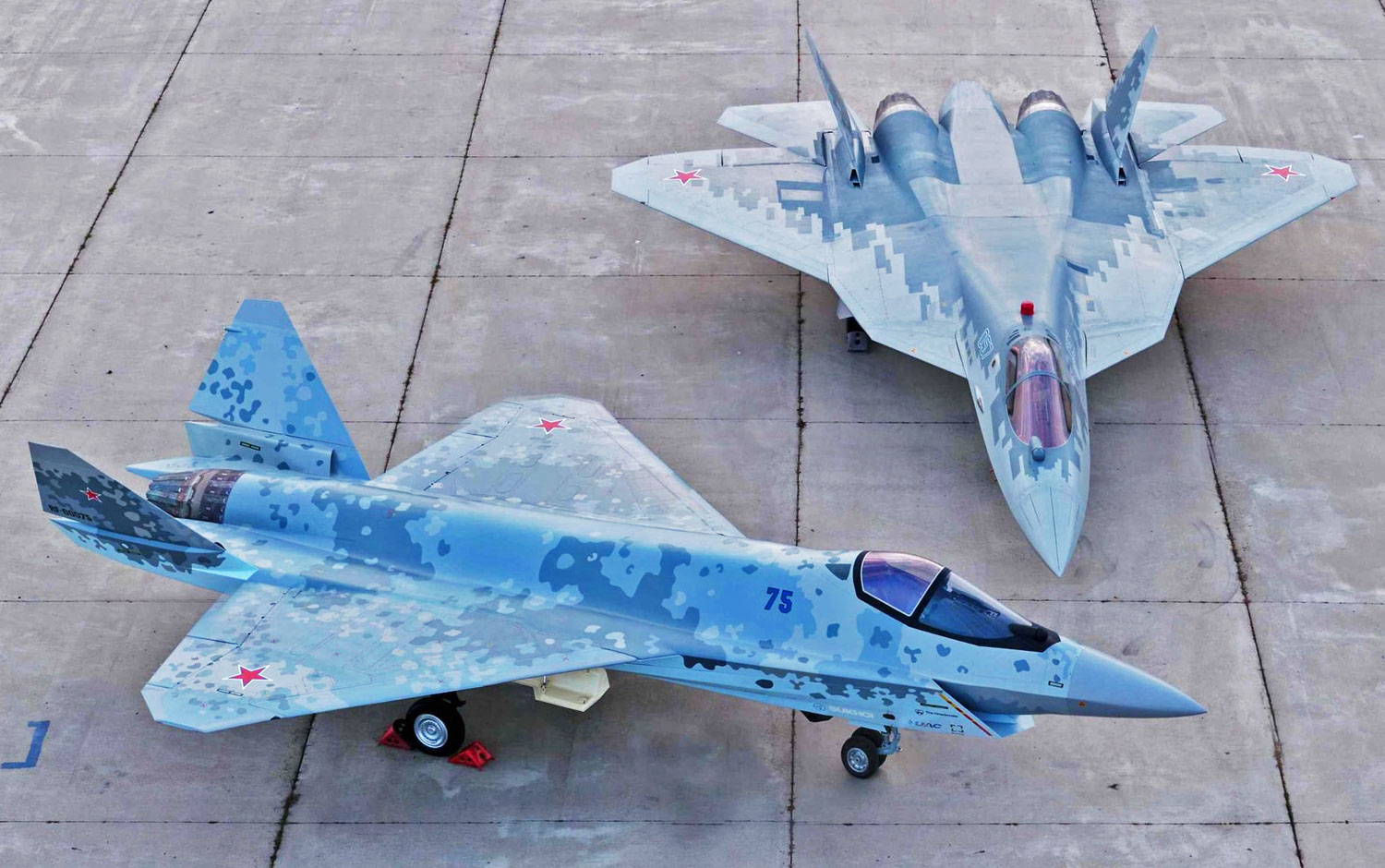Russian air force fighters are set to get ‘smarter’ with the introduction of what appears to be an Artificial Intelligence (AI)-enabled data linking and sensor fusion system that connects a pair of jets in a networked operation.
A TASS report said the system provides “intelligent support…to help the pilot decide under time pressure”. This can be assumed to be sensor and data processing systems, like on the F-35, described in a previous EurAsian Times report.
This comes after previous reports about the Su-57 acquiring a similar capability and President Vladimir Putin’s announced push to develop AI indigenously.
The report said the system offers “intelligent support of the leading and slave pair of fighters in the process of conducting long-range air combat with a pair of enemy fighters.”
The focus on a two-on-two scenario is unusual, but the “long-range” bit offers a clue – the preference for beyond-visual-range (BVR) combat. Russian Su-35S have shot down many Ukrainian fighters with the R-77 missiles since last year, and the system will undoubtedly have been developed with the experience and data gathered from such sorties.
Making The Pilot’s Job Easy
The system emphasizes providing time-constrained information to “each aircraft of the pair with information about the location of the enemy and the current phase of the partner’s attack.”
Buddy fighter pairs, where each aircraft – either of the same or a different type – perform a different role to detect, bait, or engage enemy fighters, is common.
Russian pair of Su-35S and Su-30, the oft-talked about F-22 and F-15 pair, or China’s J-16D electronic warfare jet buddying up with its Su-30, J-11, or J-10 fighters are some examples.
While both aircraft in a pair would have radars, not both would be able to track the enemy fighters on their radars simultaneously, given what role that jet might have in the pair. One jet would either be a missile truck releasing missiles based on data provided by the other fighter whose radar would be switched on or a bait that draws out adversary aircraft.
“The system includes several blocks, with the help of which pilots in a pair can quickly interact with each other, solving the tasks of tactical reception of putting the pair’s aircraft into battle, target distribution tasks, as well as the tasks of choosing an attack trajectory, determining the moment of the missile launch and the moments of applying interference to an enemy fighter,” said the report.
Sensor Fusion & Data Processing
Sensor fusion technology involves blending the various inputs from radar, optical, and other sensors around the aircraft and presenting it to the pilot as a holistic 360 degrees battlefield picture for optimum decision-making.
The American fighter has 36 million lines of software code to process and deliver the information gathered by its distributed aperture system (DAS) around the jet.
Even the Chinese J-20 and drones like the WZ-7 ‘Soaring Dragon’ have similar technology for processing tactical data. The broad aim is to lessen the burden of flying and sensor control on the pilot, allowing him to focus on the core combat element by presenting him the tactical data in a unified format, aiding quick decision-making.
While it remains to be seen how artificial intelligence (AI)-enabled sensor fusion technology might function in actual combat, Russia has the most realistic, authentic, and relevant inputs since it is presently executing a full-scale conventional war.
This is not to mention that it has faced advanced Western air defense and radar systems, and not just Cold War-era Soviet platforms that Ukraine uses.

Su-57 Is The Test-Bed For Russia’s Military AI
It has naturally found and possibly addressed issues with its military doctrines, structure, and technology, including the Su-57.
June and October reports suggested this system was in the works. In June, RIA Novosti reported four Su-57s to have been used in what appears to have been a Suppression of Enemy Air Defense (SEAD) operation in Ukraine.
The quartet was “linked to a single information network to destroy air defense systems through automatic communication systems, data transmission, navigation and identification in real-time,” a source was quoted in the report.
Andrey Yelchaninov, Deputy Chairman of the Board of the Russian Military-Industrial Commission, said that the planes could interact “not only with each other but also in various types of combat formations.” Appearing as a serious network-centric and data-linking capability, Miguel Miranda, founder of the 21st Century Asian Arms Race, rightly concluded the latest system as nothing but “networked aerial operations.”
This suggests the Su-57’s use in Ukraine has only been for stand-off long-range missile strikes and tactical information networking. But the October development seems to be the precursor for the current system. The United Aircraft Corporation (UAC) said a modernized Su-57 flew with an intelligent crew support system that practically flies the aircraft.

A year before, on July 28, 2021, Nikita Dorofeev, head of the Sukhoi Design Bureau cockpit department, said that they are teaching the system to respond to verbal commands and non-official phrases and eye movements. This reveals an AI-Machine Learning (ML) system, where the device learns and perfects itself over time and becomes incrementally capable in its autonomous operations.
Commander (Dr) Jayakrishnan Nair (Retd), an avionics specialist on Russian aircraft, doubted the efficiency of autonomy in decision support in air combat. “Pilot cannot give his life to machines to look after,” he said.
What is important to note is that the development results from a national science and technology push. President Vladimir Putin was reported to have ordered accelerating AI projects. The National Strategy for the Development of Technologies (NSDT) was revived as the nodal agency for approving funding.
- The author can be reached at satamp@gmail.com
- Follow EurAsian Times on Google News




